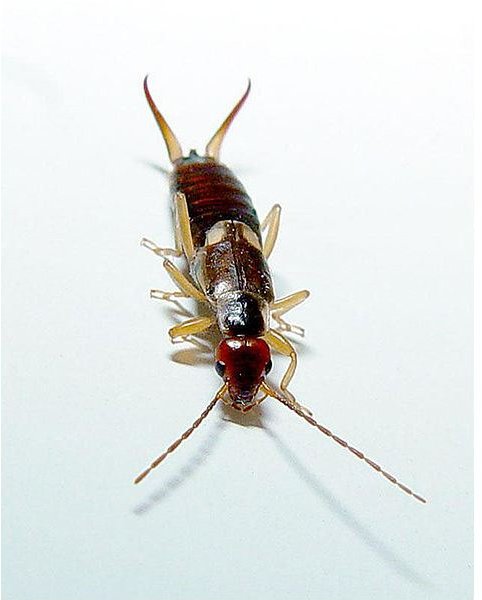Earwigs, Organic Control: Natural Ways to Get Rid of Earwigs
Organic Earwig Control
With the coming of the warm and moist summer months, many people face a common problem - earwigs. Organic control may be necessary if you have them. Earwigs love dark, damp places. Check under patio furniture, around and under plant boxes, behind cabinets in bathrooms and basements, or near piles of wood around the home. You can identify them as small brown insects with a flat, elongated body. They have pincers on their abdomen which are used to capture pray or deliver a nasty pinch to their predators. While earwig bites contain no venom of any sort, they are still quite painful. If you are positive that you have an earwig problem, there are several steps you can take to control them without harmful chemicals or expensive calls to the exterminator.
Remove Excess Moisture
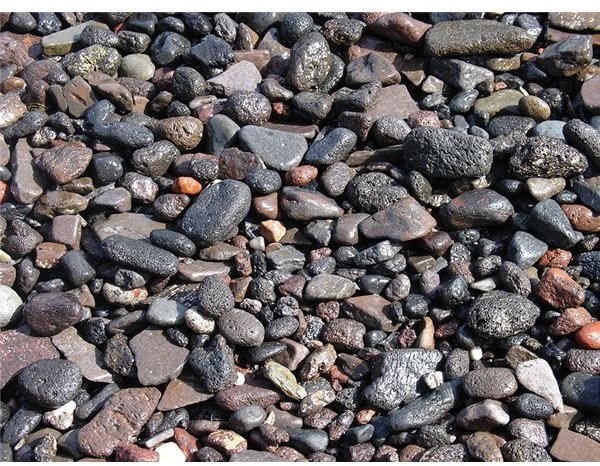
Earwigs are attracted to damp areas and are prone to congregating where they have easy access to moisture. Check around your foundation for any areas that seem to have excess water, especially downspouts of gutters. If you find that areas near gutters seems too damp, you may need to extend your gutter system out an additional foot or two to allow for popper drainage. Avoid applying a bark mulch directly around your home, as bark is a preferred dwelling of earwigs and holds onto moisture for long periods of time. If you find that the area immediately around your house is very damp, you can add a gravel and limestone border, which will help with drainage. Don’t forget to check areas near any outdoor faucets and hoses, taking care to make sure there are no leaks and that the area can sufficiently dry after every use. If you have a wood pile for a wood burning furnace in your home, try to place the majority of it at least thirty feet from your home, as earwigs love to hide in the dark, damp crevices between the logs.
If the problem with moisture also happens to be inside your home, you can purchase commercial moisture removal products from your hardware store or invest in a dehumidifier. Both will drastically reduce the amount of water inside your home. Make sure to place them in areas that have a known moisture problem, such as bathrooms and basements. Make sure that your showers, bathtubs, and sinks all have proper drainage, as earwigs are prone to seek these places out.
Limit the Night Time Light
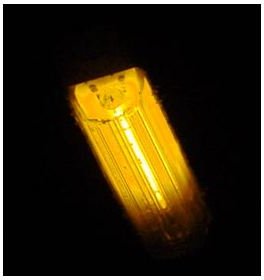
Earwigs are largely nocturnal creatures that can easily be drawn in at night by any lights you have in or around your home. Avoid leaving on exterior lights whenever possible. Small solar lights, such as the ones used to illuminate walkways and flower gardens, are best kept somewhere away from the immediate area of your property. Not to mention, the lights will draw in other insects which could possibly draw earwigs to your property to feed.The darker you keep it, the more likely the earwigs will not come from far away to hunt for food around your home. Some people also believe that sodium lights - the lights that cast a yellow glow rather than a white or blue glow - do not attract earwigs and other insects.
Limit Their Food Supply

The common earwig is an omnivore, which means that in addition to eating several different kinds of insects, they will also eat several different kids of plants, flowers, vegetables, and fruits. Avoid placing roses, dahlias, zinnias, and hollyhock on porches and patios, or around your foundation. These plants are known, preferred food sources of the earwig. When harvesting fruits and vegetables from your garden, always check your produce to make sure that there are no earwigs that you may be bringing inside your house. Wash your produce under water to make sure you do not bring any eggs or young larvae into your home. Proper control of other insects will also help to drive away hungry earwigs.
Continue to page 2 for more information on earwigs organic control.
Limit Points of Entry
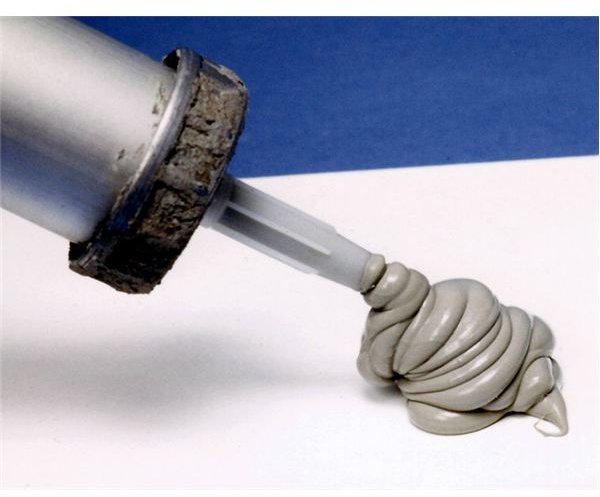
Earwigs are small and flat, which means that they are especially adept at finding small crevices and openings around your home to climb into. If you have any points of entry from outside into your home, earwigs will be able to crawl through them and become an indoor annoyance very quickly. Check for cracks and openings around doors and windows and if found, apply caulking or weather stripping to seal them off. Make sure you also check the base of screen or storm doors, and make sure they close tight. It is especially important to check ground level windows, such as those that go to basements, areas which are generally dark and damp to begin with.
Draw in Natural Predators
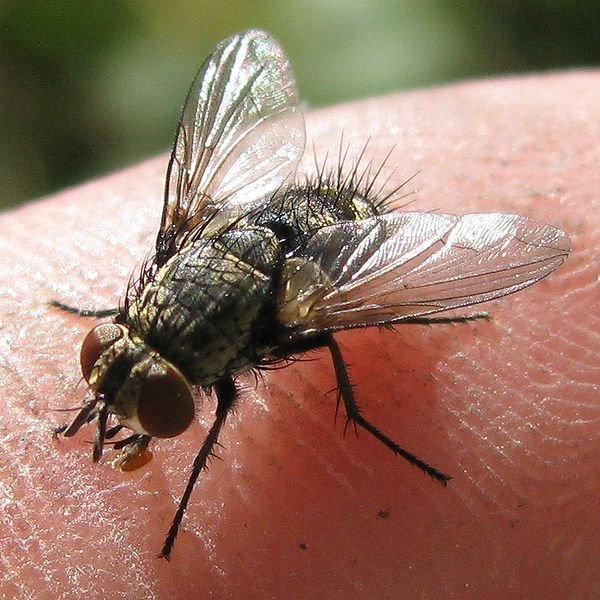
One of the most effective strategies for eliminating earwigs is to encourage their natural predators to frequent the area around your home. Toads and lizards love to eat earwigs, but unfortunately not everyone can draw in these animals to control the population of earwigs. However, tachnid flies are great at controlling the population of earwigs and live in the same areas that earwigs do. These flies look quite similar to house flies, and can easily be drawn in by planting certain flowers and plants around your home. Such plants include dill, fennel, anise, cosmos, buckwheat, and painted daises. Keeping these plants in flowerbeds or flower boxes near your home will attract tachnid flies, who will then help control the population of earwigs.
Invest in a Natural Insecticide, Such As Boric Acid
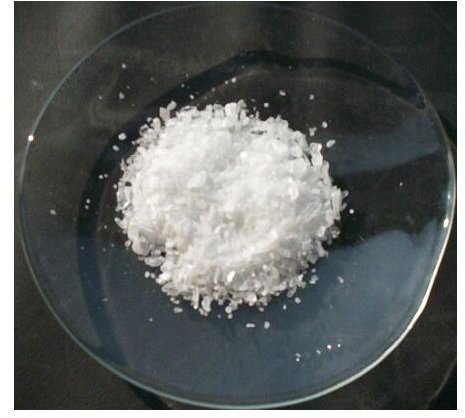
If you find that you have a lot of earwigs around and you need to reduce their population quickly, invest in a small container of boric acid, available at most hardware and home supply stores. Boric acid is found naturally in a raw, natural form in volcanic regions and occurs naturally in almost all fruit. It’s long been used as an antiseptic for burns and cuts, as well as eye wash. It is an extremely effective insecticide while being harmless to humans and animals. It acts as a poison, killing the insects when ingested. To control earwigs, simply dust hard to reach crevices suspected of hiding earwigs with a light amount of boric acid. You can also line the perimeter of your foundation with a light dusting of boric acid to help prevent earwigs, as well as fleas, silverfish, ants, and cockroaches from entering the home. The dry powder is abrasive on the earwigs exoskeleton. This means that they prefer to not cross through it if at all possible. It should be noted that while it is fairly harmless to humans and animals, you should keep children and pets from ingesting large amounts of boric acid.
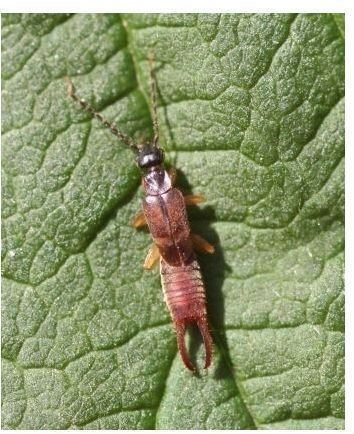
Remember that earwigs are insects, and the thought of completely eliminating them from your property will be impossible to do. However, the old addage rings true, the best offence is a great defense. When controlling earwigs, the best thing you can do is practice preventing them through insect-proofing your doors and windows and preventing moisture from accumulating in or near the home. Earwigs organic control is best done in early spring while it is still cold out, before they become active.
References
https://www.ento.csiro.au/education/insects/dermaptera.html
https://pestworld.org/for-consumers/Pest-Guide/Pest/Earwigs
https://www.bbc.co.uk/nature/wildfacts/factfiles/421.shtml
https://www.getridofthings.com/get-rid-of-earwigs.htm
Image References
https://commons.wikimedia.org/wiki/File:Lesser_earwig.jpg
https://en.wikipedia.org/wiki/File:Boric_acid.jpg
https://commons.wikimedia.org/wiki/File:Caulking.jpg
https://en.wikipedia.org/wiki/File:Forficula.auricularia.-.lindsey.jpg
https://commons.wikimedia.org/wiki/File:FliegeFinger.jpg
https://en.wikipedia.org/wiki/File:Lampe_a_vapeur_de_sodium.jpg
https://en.wikipedia.org/wiki/File:Gravel_on_a_beach_in_Thirasia,_Santorini,_Greece.jpg
https://en.wikipedia.org/wiki/File:Forficula_auricularia.jpg
